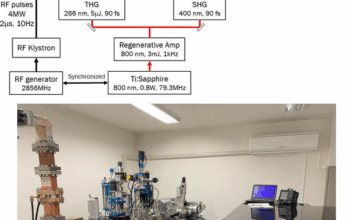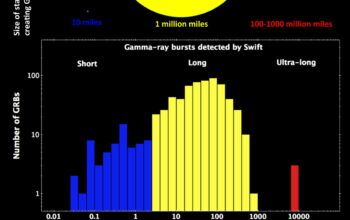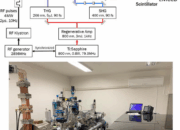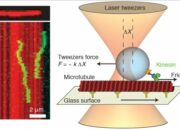In the realm of quantum physics, the creation of a Bose-Einstein condensate (BEC) has garnered significant attention due to its fascinating implications and unique properties. The question that inevitably arises is: How does one generate a Bose-Einstein condensate from photons? This inquiry is particularly tantalizing given that, traditionally, BECs have been constructed using neutral atoms at ultra-low temperatures. However, recent advancements in manipulating light and photons open up novel avenues for exploration. This article will meticulously dissect the process involved in the creation of a photon-based BEC while addressing the complexities and challenges inherent to such an endeavor.
The conceptual framework of a Bose-Einstein condensate is predicated on the principles of quantum mechanics, wherein particles known as bosons occupy the same quantum state, resulting in unprecedented collective behavior. Photons, the fundamental units of light, are massless bosons and theoretically possess the necessary characteristics for Bose-Einstein condensation. However, the road to their condensation is fraught with intricate obstacles that arise from their unique properties.
To begin with, one must acknowledge that photons exist at extremely high energy states, a reality that complicates the pathway toward forming a condensate. In comparison, traditional BECs utilize atoms that can be effectively cooled to near absolute zero, creating conditions conducive for condensation. Thus, the challenge lies in devising a method to lower the effective temperature of photons enough for them to occupy the same quantum state. This is where innovative experimental methods come into play.
One prominent approach to achieving photon condensation involves the use of optical cavities filled with nonlinear optical media. By employing a dye or semiconductor microcavity, photons can be captured and allowed to interact with the medium at certain thresholds. Through stimulated scattering processes, emitted photons can cluster, effectively mimicking the behavior exhibited in traditional atomic BECs. This phenomenon is often referred to as ‘photon BEC’ or ‘polariton condensation.’
Polariton condensation serves as an essential bridge between light and matter. Polaritons are quasi-particles that emerge from the coupling of photons with excitons (bound states of electrons and holes). When conditions are appropriately tuned—specifically, when the polariton density reaches a critical threshold—these quasi-particles can exhibit bosonic statistics, thus paving the way for condensation. The realization of a polariton BEC necessitates precise control over light-matter interactions and substantial experimental finesse.
However, even with these advancements, one must navigate several hurdles. For instance, the lifetime of photons in the cavity is crucial in facilitating interactions between them. Short-lived photons may disperse before they can effectively achieve the conditions required for condensation. To counteract this, researchers often utilize lasing techniques to enhance photon lifetime within the cavity, thus increasing the probability of bosonic behavior.
Now, as we venture deeper into the creation of a photon-based BEC, one must contemplate the role of thermalization—a critical process that tends to favor certain energy states over others. In a typical BEC, thermalization is achieved through collisions that redistribute energy among particles. However, photons do not collide in the conventional sense. Instead, their interactions are mediated through scattering processes within the medium, necessitating a creative approach to establish an effective thermal equilibrium.
An essential criterion for achieving photon BEC is maintaining a balanced ratio between the photon influx, created via pumping mechanisms, and the output, manipulated through photonic confinement. This delicate balancing act results in a build-up of excitations, leading to the desired condensate state. Without this equilibrium, the system risks breaching critical thresholds, resulting in spontaneous emission and loss of coherence.
Furthermore, the experimental configuration must accommodate a range of environmental factors that may impact the fidelity of the photon BEC. Fluctuations in temperature, light intensity, and pressure can significantly perturb the coherence necessary for sustained condensation. Thus, it becomes imperative to construct a robust and controlled environment within the optical cavity to mitigate these external influences.
The pinnacle of success in creating a photon-based BEC not only lies in understanding the underlying physics but also in mastering the potential for practical applications. The implications of such a breakthrough extend beyond pure academic inquiry. Harnessing photon BEC could revolutionize fields such as quantum computing, information processing, and materials science. The potential for creating highly efficient light sources or developing advanced quantum transistors presents an exciting frontier for researchers.
In conclusion, creating a Bose-Einstein condensate from photons is a multifaceted challenge that intertwines theoretical insights with experimental ingenuity. Navigating the intricate landscape of photon interactions, thermalization processes, and environmental control presents formidable obstacles but also rich opportunities for discovery. As physicists continue to push the boundaries of our understanding, the prospect of realizing a photon-based BEC may soon transition from a tantalizing question to a groundbreaking reality.










